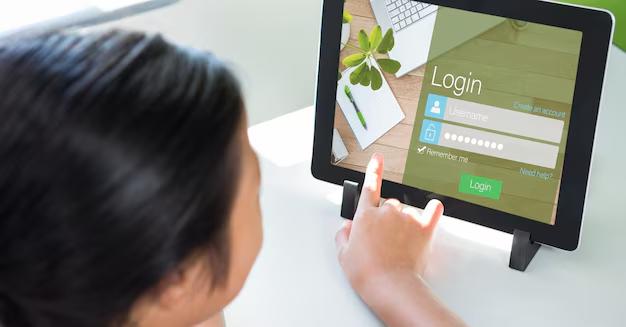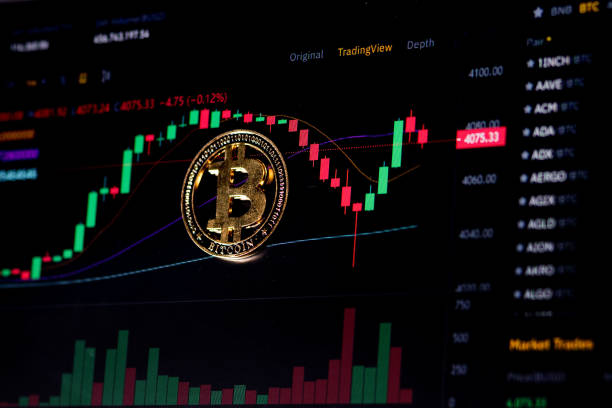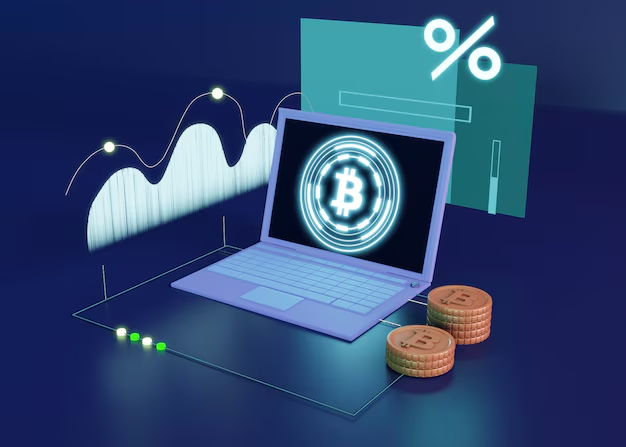1. Introduction: The Importance of Securing Your MetaMask Wallet
When you download MetaMask and start handling your cryptocurrency, securing your wallet is one of the maximum critical steps you may take. Just as athletes cautiously manage their bodily health by shielding their muscular tissues and joints, securing your MetaMask wallet is vital for shielding your virtual property. Whether you’re a professional athlete exploring crypto investments or a leisure athlete curious approximately using cryptocurrency, the steps you are taking to protect your pockets will assist make sure that your budget continues to be secure inside the ever-evolving international of virtual finance. In this newsletter, we’re going to walk you through sensible and clean-to-comply recommendations on how to stabilize your MetaMask wallet to guard your crypto assets against ability threats.
2. Creating a Strong Password for Your MetaMask Wallet
A strong password is your first line of defense in opposition to unauthorized access to your MetaMask wallet. Just like in sports, in which a sturdy basis—whether or not it is in your muscle tissues or method—helps you stay at the pinnacle of your game, a robust password is vital for keeping your cryptocurrency safe. When putting in place your MetaMask wallet, taking the time to create a secure password will appreciably lessen the hazard of unauthorized access.
2.1 What Makes a Strong Password?
A strong password should be long, unique, and complex. In general, a password should:
- Contain at least 12 characters. The longer the password, the harder it is for someone to crack.
- Include a mix of letters (both uppercase and lowercase), numbers, and special characters. This makes it more difficult to guess.
- Avoid using easily guessable information, like your name, birth date, or simple words that can be found in a dictionary.
Think of your password as a lock on your gym bag—if it’s too simple, someone could easily break in. A secure password will help keep your wallet “locked” and your funds safe.
2.2 Common Mistakes to Avoid in Creating Your MetaMask Password
While creating a password, it’s essential to avoid some common mistakes that could leave your MetaMask wallet vulnerable. Here are a few things to steer clear of:
- Using common phrases or easily guessable combinations: like “123456,” “password,” or “qwerty.” These are commonly used by hackers to gain access to accounts.
- Reusing passwords across multiple platforms: If one of your accounts gets compromised, the hacker might try to use the same password to access your MetaMask wallet.
- Making passwords too short or simple: While you may be tempted to create a password that’s easy to remember, always prioritize security over convenience. Use a password manager if needed to store long and complex passwords securely.
Creating a strong password for MetaMask is an essential step in protecting your digital wallet. As with any investment, your time and effort in securing your wallet will pay off by reducing the likelihood of a potential breach.
3. Backing Up and Securing Your Recovery Phrase
Your recovery word, every so often called a “seed word,” is a vital part of securing your MetaMask pockets. It acts as a backup, permitting you to restore get right of entry to your pockets in case your device is lost, or broken, or if you neglect your password. Just as athletes take measures to defend their equipment, securing your healing phase is similarly crucial for ensuring that your cryptocurrency stays secure and recoverable. Without this phrase, there’s no manner to get better your finances if something is going incorrect, so safeguarding it is a pinnacle priority.
3.1 Understanding the Recovery Phrase
When you first set up your MetaMask wallet, you’ll take delivery of a healing phrase—a string of 12 random words. This phrase is particular to your pockets, and it’s miles the best way to restore your get entry if you lose admission to the tool or forget about your password. This restoration word is just like the key on your locker: if a person else receives access to it, they can free up your pockets and scouse borrow your price range.
Make sure to keep it private and secure. If you lose it, you lose the ability to recover your wallet and its contents.
3.2 Best Practices for Storing Your Recovery Phrase Safely
Here are a few essential tips to help secure your recovery phase:
- Write it down on paper: Do not store your recovery phrase digitally (in emails, cloud storage, or on your phone) because these can be hacked. Paper is a safer option, as long as it is kept secure.
- Store it in a secure place: Put the written recovery phrase in a fireproof, waterproof safe or another secure location, away from prying eyes. You could also use a specialized storage solution, like a metal recovery seed storage device, which can withstand extreme conditions.
- Consider having a backup: If you feel comfortable, you could store a second copy of your recovery phrase in another secure location (for example, with a trusted family member or in a safe deposit box) in case the first copy is lost or destroyed.
- Never share it: Your recovery phrase is like the key to your locker. Never share it with anyone, and be cautious of scams or phishing attempts where attackers try to trick you into revealing it.
Taking these steps will ensure that even if something happens to your device, you can always restore access to your MetaMask wallet and protect your cryptocurrency.
4. Enabling Two-Factor Authentication (2FA) for Extra Security
Two-issue authentication (2FA) adds a further layer of protection to your MetaMask wallet. While your password is the first line of protection, 2FA ensures that even though a person gains admission to your password, they won’t be capable of accessing your wallet without an extra verification step. This is particularly important in the global of virtual finance, wherein transactions are irreversible and the risk of theft is real.
By permitting 2FA, you’re essentially including an extra “lock” on your wallet. This more protection measure is a critical step to save you unauthorized access and defend your crypto property.
4.1 How Two-Factor Authentication (2FA) Works
2FA calls for you to provide styles of identification before granting access to our account: something you understand (your password) and something you’ve got (a code despatched for your mobile device or generated through an authentication app).
For MetaMask, 2FA works by requiring a time-sensitive, one-time code that’s sent to your phone or generated by an authenticator app, such as Google Authenticator or Authy. Even if someone knows your password, they would still need access to your mobile device to retrieve the 2FA code, making it significantly more difficult for unauthorized individuals to gain access.
4.2 Setting Up 2FA for MetaMask
MetaMask itself does not directly offer 2FA, but you can enable 2FA on any platforms that you use to interact with your wallets, such as cryptocurrency exchanges or apps like Google Authenticator for extra protection. Here’s how you can set it up:
- Download and install an authenticator app: like Google Authenticator or Authy on your phone.
- Enable 2FA on your exchange or platform: For example, if you’re using a platform like Coinbase, you’ll find an option to enable 2FA in your security settings. Follow the platform’s instructions to link your authenticator app with your account.
- Scan the QR code: provided by the platform using the authenticator app. This will generate a unique code that refreshes every 30 seconds.
- Test the 2FA setup: by logging in to the platform and entering the code from the app when prompted.
By enabling 2FA on any exchange or platform linked to your MetaMask wallet, you add a layer of security, ensuring that even if your MetaMask password is compromised, your account remains protected.
5. Using a Hardware Wallet for Added Protection
For athletes who are serious about securing their virtual belongings, the usage of a hardware wallet (additionally called cold garage) affords a further layer of safety. While MetaMask itself gives software program-based protection, a hardware wallet permits you to keep your cryptocurrency offline, minimizing the danger of hacks or online threats. This is in particular crucial for athletes who might be coping with big sums of cryptocurrency or want to take each precaution to keep their belongings secure.
A hardware wallet is a physical device that stores your MetaMask wallet’s private keys offline, making it nearly impossible for hackers to access them remotely. If you’re looking for the highest level of security, using a hardware wallet is an excellent option.
5.1 What is a Hardware Wallet?
A hardware wallet is a physical device designed specifically to store your cryptocurrency securely offline. These wallets are not connected to the internet, which significantly reduces the risk of your private keys being stolen by malware, phishing attacks, or other online vulnerabilities. Popular hardware wallets include Ledger Nano S, Ledger Nano X, and Trezor.
Hardware wallets usually include a display screen and physical buttons, allowing you to affirm transactions manually, which provides any other layer of security. Even if a person profits from getting the right of entry to your MetaMask account or tool, they nevertheless may not be able to get entry to your crypto without our physical right of entry to your hardware pockets.
5.2 How to Set Up MetaMask with a Hardware Wallet
Integrating a hardware wallet with MetaMask is relatively simple. Here’s a step-by-step guide to setting it up:
- Purchase a hardware wallet: Choose a reputable hardware wallet brand, such as Ledger or Trezor, and follow the instructions to set it up.
- Install MetaMask on your device: If you haven’t already, install the MetaMask browser extension or mobile app.
- Connect your hardware wallet to MetaMask:
- Open MetaMask and click on the account icon.
- Select the “Connect Hardware Wallet” option.
- Choose your hardware wallet brand (Ledger or Trezor) and follow the on-screen instructions to connect it.
- Use MetaMask with the hardware wallet: After setting up, you’ll be able to manage your crypto directly through MetaMask, but the private keys will remain stored securely on the hardware wallet.
By using a hardware wallet in conjunction with MetaMask, your funds will remain safe from online threats and hacks, even if your MetaMask wallet itself is compromised.
6. Avoiding Phishing Scams and Malicious Links
Phishing attacks are one of the most common ways that hackers try to gain access to your MetaMask wallet. These scams often involve tricking you into revealing your private information or recovery phrases through fraudulent emails, websites, or social media messages. Just as athletes are cautious about the risks of performance-enhancing substances or shady training methods, it’s crucial to be vigilant when navigating the digital world. Recognizing phishing attempts and avoiding malicious links is an essential skill to protect your crypto assets.
6.1 What Are Phishing Scams?
Phishing scams are fraudulent attempts to steal sensitive information by impersonating legitimate sources. In the context of MetaMask and cryptocurrency, hackers may send emails or direct you to websites that look identical to official MetaMask or crypto-related sites. These phishing attacks often ask you to provide your recovery phrase, password, or other sensitive information, which the attacker then uses to steal your funds.
Phishing scams can come in many forms, such as:
- Fake MetaMask login pages: A hacker might create a website that looks exactly like the official MetaMask site, tricking you into entering your credentials.
- Suspicious emails or messages: Hackers may pose as MetaMask support, asking you to reset your password or click on a link to resolve a “security issue.”
- Fake giveaways or “exclusive offers”: Fraudsters may offer free crypto in exchange for your recovery phrase or wallet information.
6.2 How to Spot a Phishing Attack
Here are some key signs to help you spot phishing attempts and avoid falling victim to these scams:
- Check the website URL: Always double-check the website URL in your browser’s address bar. Official MetaMask websites will always have the URL https://metamask.io. Be cautious of sites with misspellings or unusual domain names (e.g., metamaks.io).
- Look for poor grammar and spelling: Phishing emails and websites often have errors in grammar or spelling. Official MetaMask communications will be professionally written.
- Never click on suspicious links: Always type web addresses directly into your browser rather than clicking on links in emails or text messages. If the email or message looks suspicious, it’s best to manually navigate to the official site.
- Check for suspicious attachments: MetaMask will never ask you to download an attachment or a file. If you receive an unsolicited email with an attachment, do not open it.
- Use official channels: If you’re ever unsure whether a communication is legitimate, go directly to the MetaMask website or app to verify it. Avoid engaging with messages or requests from unknown sources.
If you suspect you’ve fallen victim to a phishing scam, immediately change your password and restore your MetaMask wallet using your recovery phrase. Always be cautious and verify the legitimacy of any communication.
7. Keeping Your MetaMask and Device Software Updated
One of the most important aspects of maintaining a secure MetaMask wallet is ensuring that both the MetaMask app/extension and the device you use are regularly updated. Just as athletes follow training regimens to stay in top shape, keeping your software up-to-date ensures that you’re equipped to handle the latest security threats. Regular updates help patch any security vulnerabilities, making it harder for hackers to exploit outdated versions of the software.
7.1 Updating Your MetaMask Extension or Mobile App
MetaMask releases update to address new features, fix bugs, and patch security vulnerabilities. To ensure you’re protected, it’s important to keep your MetaMask wallet up-to-date. Here’s how you can update MetaMask:
- For Desktop:
- If you’re using the MetaMask browser extension, it usually updates automatically, but you can manually check for updates by going to the Chrome Web Store (or the equivalent for your browser) and ensuring the extension is the latest version.
- If MetaMask hasn’t updated automatically, click on the three dots in the top-right corner of your browser, select “More Tools,” and then “Extensions.” Find MetaMask and check for an update option.
- For Mobile:
- On your smartphone, go to the App Store (iOS) or Google Play Store (Android).
- Check the “Updates” section, and if MetaMask has an update available, click “Update.”
Updating MetaMask regularly is vital for patching any known security vulnerabilities and ensuring that your wallet operates smoothly and safely.
7.2 Keeping Your Device Secure
Your MetaMask wallet’s security doesn’t just depend on the app itself. The device you use to access your wallet is also a potential target for hackers. Keeping your device secure helps protect your MetaMask wallet from malware and other online threats. Here are a few essential tips to secure your device:
- Install antivirus software: Ensure that your computer or mobile device has reliable antivirus software installed to detect and block potential threats.
- Enable your device’s firewall: A firewall adds another layer of defense against unauthorized access and attacks.
- Regularly update your operating system: Just like with MetaMask, keeping your device’s operating system updated is essential. Updates often include critical security patches that protect you from emerging threats.
- Avoid public Wi-Fi for sensitive transactions: Public Wi-Fi networks are not secure, and using them to access your MetaMask wallet could expose your funds to risks. Always use a secure, private network when accessing your wallet.
- Use a VPN: A Virtual Private Network (VPN) encrypts your internet connection, providing an added layer of security when accessing your MetaMask wallet.
By ensuring both your MetaMask app and your device are updated and protected, you can further reduce the risk of unwanted access to your wallet.
8. Monitoring Your MetaMask Wallet for Unusual Activity
Staying vigilant and regularly monitoring your MetaMask wallet for unusual activity is essential for ensuring the security of your crypto assets. Just as athletes monitor their physical performance and recovery, it’s important to keep an eye on the transactions and balances in your wallet. Early detection of suspicious activity can help you act quickly to prevent potential losses. This section will cover how to identify red flags and what actions to take if you notice anything unusual.
8.1 Regularly Checking Your Transaction History
MetaMask allows you to view your transaction history directly within the app or extension. Make it a habit to periodically check for any transactions that you didn’t initiate or recognize. Some indicators of suspicious activity may include:
- Unfamiliar transaction addresses: If you notice transactions being sent to addresses you don’t recognize, it’s a red flag.
- Large withdrawals or transfers: Unexpected large withdrawals can indicate a security breach.
- Failed or unauthorized transactions: If you see transactions marked as “failed” or “pending” without your knowledge, investigate immediately.
To check your transaction history:
- On Desktop: Open MetaMask, go to your account and scroll through the transaction list.
- On Mobile: Tap on the “Activity” tab to see recent transactions.
8.2 Setting Up Alerts for Monitoring Your Wallet
Many third-party services and tools offer wallet monitoring features that can help you stay on top of your crypto transactions. Some of these services allow you to set up alerts for specific wallet addresses, notifying you when a transaction occurs or if certain conditions are met (like a large withdrawal). While MetaMask doesn’t provide built-in alerts, these third-party tools can be integrated with your wallet for added peace of mind.
Popular tools for wallet monitoring include:
- Etherscan: You can track your MetaMask wallet on Etherscan by entering your wallet address and subscribing to transaction alerts.
- Blockfolio (now FTX): This app helps you track your portfolio and provides notifications for large price swings or transactions.
- MyEtherWallet: Offers wallet tracking features and alert notifications.
By setting up these tools, you can receive real-time notifications that allow you to act quickly if unauthorized transactions are detected.
8.3 What to Do if You Detect Suspicious Activity
If you notice any suspicious activity in your MetaMask wallet, it’s critical to act quickly:
- Immediately change your MetaMask password and ensure you have a strong password that hasn’t been compromised.
- Transfer your funds to a new wallet. If you suspect that your MetaMask wallet has been compromised, it’s safest to transfer your remaining assets to a new, secure wallet.
- Report the incident: Contact MetaMask support or the relevant platform where you’re using the wallet to report any suspicious transactions. They may have further guidance or steps to take.
Taking quick action when suspicious activity is detected can help minimize potential losses and ensure the continued safety of your funds.
9. Conclusion: The Ongoing Responsibility of Securing Your MetaMask Wallet
Securing your MetaMask wallet is not a one-time task, but an ongoing responsibility. As the world of cryptocurrency continues to grow, so do the tactics used by cybercriminals. Just as athletes continually adjust their training and recovery routines to stay ahead of the competition, you must stay proactive in maintaining the security of your digital assets. By following the steps outlined in this guide—creating strong passwords, securing your recovery phrase, enabling 2FA, using hardware wallets, and avoiding phishing scams—you are taking important steps toward protecting your crypto.
Remember, your cryptocurrency investments are valuable, and the security of your MetaMask wallet is key to preserving that value. By remaining vigilant, regularly monitoring your wallet, and updating your security measures, you ensure that your crypto assets are well-protected in an increasingly digital world.











